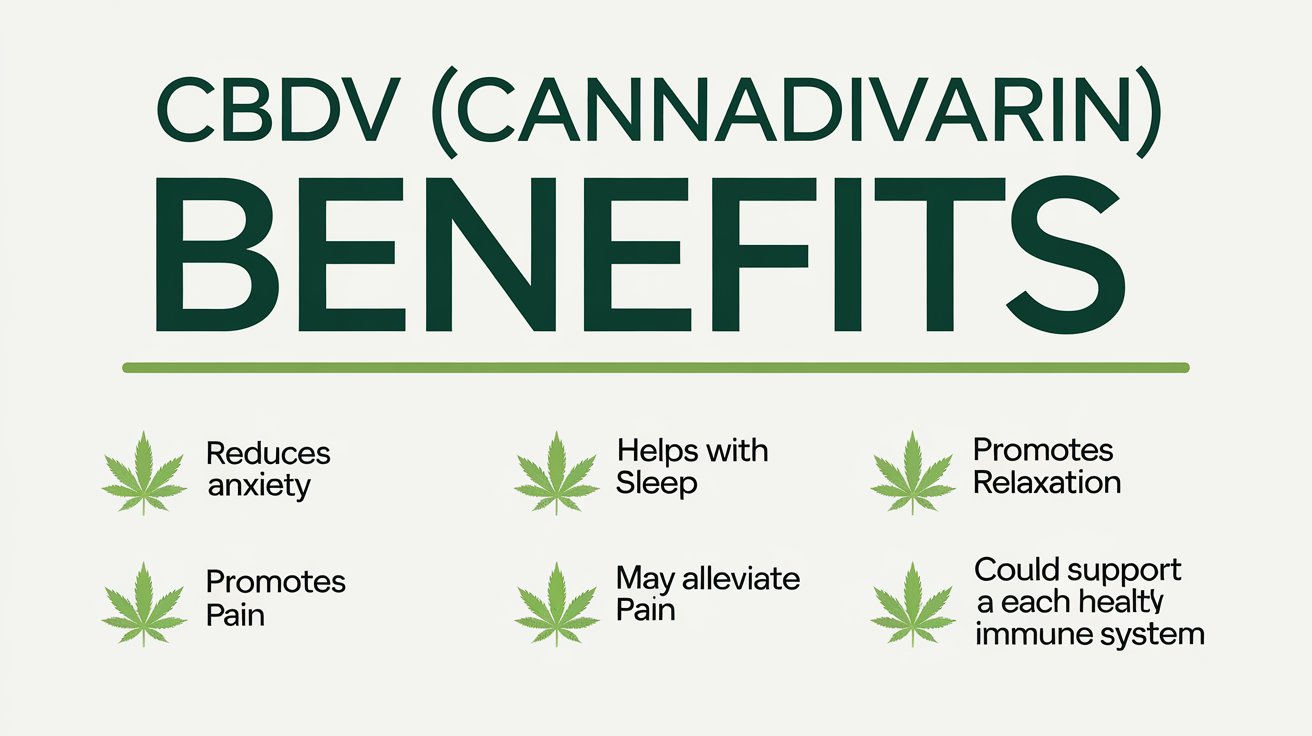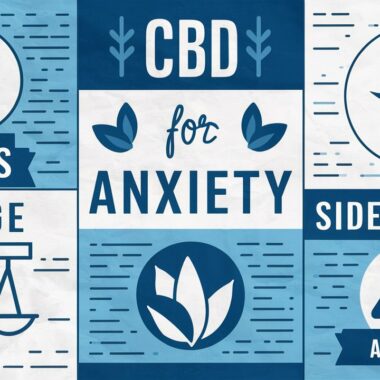Cannabidivarin, or CBDV, is a lesser-known cannabinoid found in the cannabis plant, often overshadowed by its more famous cousins, THC and CBD. Yet, this unassuming compound is quietly carving out a reputation as a powerhouse with unique effects and promising benefits. Unlike THC, CBDV doesn’t get you high, and while it shares some similarities with CBD, it stands apart with its distinct profile. In this deep dive, we’ll explore what CBDV is, how it works in the body, its potential therapeutic benefits, and why it’s poised to become a breakout star in the world of wellness and medicine. From cutting-edge research to real-world implications, this guide offers fresh insights into CBDV’s untapped potential, making it a resource you’ll want to keep handy.
What Is CBDV? A Cannabinoid with a Twist
CBDV is a non-psychoactive cannabinoid, meaning it won’t alter your mind like THC does. Structurally, it’s closely related to CBD (cannabidiol), but with a key difference: CBDV has a shorter side chain of two carbon atoms. This subtle tweak might sound minor, but it translates into unique interactions with the body’s endocannabinoid system (ECS)-the network of receptors and enzymes that regulate everything from mood to inflammation.
Found naturally in Cannabis sativa, CBDV is more abundant in certain strains, particularly landrace varieties from regions like India and Mexico, where cannabis has adapted to diverse environments over centuries. Industrial hemp, bred for low THC, also contains trace amounts of CBDV, though selective breeding is now amplifying its presence. This cannabinoid’s rarity has kept it under the radar, but as science catches up, CBDV is stepping into the spotlight.
How CBDV Works: A Dance with the Brain and Beyond
To understand CBDV’s effects, we need to peek under the hood of the ECS. Unlike THC, which binds directly to CB1 receptors in the brain (triggering that classic “high”), CBDV takes a more nuanced approach. Research suggests it interacts with TRPV1 and TRPV2 receptors-part of the transient receptor potential (TRP) family known as “capsaicin receptors” because they respond to heat and pain signals. This interaction hints at CBDV’s potential to modulate pain and inflammation, but its influence doesn’t stop there.
CBDV also appears to inhibit the enzyme diacylglycerol lipase (DAGL), which reduces the production of 2-AG, a key endocannabinoid that activates CB1 receptors. In simpler terms, CBDV might dial down overactive signaling in the ECS, offering a calming effect without sedation. This mechanism sets it apart from CBD, which primarily influences CB1 and CB2 receptors indirectly. The result? A cannabinoid that’s subtle yet precise, like a fine-tuned instrument rather than a blunt hammer.
The Benefits of CBDV: Where Science Meets Possibility
While research on CBDV is still in its early stages, the findings so far are tantalizing. Here’s a breakdown of its most promising effects and benefits, enriched with original analysis and forward-looking insights.
- Epilepsy and Seizure Management: A Game-Changer? CBDV’s big break came from studies on epilepsy, where it’s shown anticonvulsant properties. A 2013 study in the British Journal of Pharmacology demonstrated that CBDV reduced seizure severity in animal models, likely by stabilizing hyperexcitable neurons. GW Pharmaceuticals, the company behind the CBD-based drug Epidiolex, has even patented CBDV for epilepsy treatment. What’s intriguing is CBDV’s potential synergy with CBD-could a combo therapy outperform either alone? Imagine a future where personalized cannabinoid blends tackle epilepsy more effectively, tailored to individual brain chemistry.
- Autism Spectrum Disorder (ASD): A New Frontier CBDV’s effects on neurological conditions extend to ASD, where preclinical research suggests it could address repetitive behaviors and social deficits. A 2019 study in Translational Psychiatry found that CBDV altered brain glutamate and GABA levels in autistic-like rodents, hinting at a role in balancing excitatory and inhibitory signals. This isn’t just about symptom relief-it’s about rethinking how we support neurodiversity. Could CBDV become a bridge to better communication and connection for those with ASD? Human trials are underway, and the answers could reshape therapeutic approaches.
- Anti-Inflammatory Power: Beyond the Surface, Inflammation is the root of many chronic diseases, and CBDV’s TRPV receptor affinity gives it an edge. A 2021 study in Phytotherapy Research highlighted its ability to reduce inflammation in gut tissue, suggesting applications for conditions like irritable bowel syndrome (IBS) or Crohn’s disease. But here’s the kicker: CBDV’s anti-inflammatory effects might also protect the brain, potentially slowing neurodegenerative diseases like Alzheimer’s. Picture this, a daily CBDV supplement that keeps both your gut and mind in check. It’s a hypothesis worth exploring as research deepens.
- Nausea Relief: A Natural Remedy Feeling queasy? CBDV might help. Animal studies, such as one published in Psychopharmacology in 2013, showed it suppressed nausea by influencing the brainstem’s vomiting center. This could make CBDV a gentler alternative to pharmaceutical antiemetics, especially for chemotherapy patients seeking natural relief. Unlike CBD, which has broader effects, CBDV’s targeted action could offer precision without the extras, a niche yet valuable benefit.
- Bone Health: An Unexpected Ally, Here’s where CBDV gets wild. Early research hints it might stimulate bone growth by interacting with CB2 receptors in osteoblasts (bone-forming cells). A 2015 study in Bioorganic & Medicinal Chemistry suggested cannabinoids like CBDV could one day treat osteoporosis or speed fracture healing. Imagine hikers or athletes popping a CBDV tincture to keep their skeletons sturdy-it’s a quirky, futuristic twist on cannabinoid therapy.
Beyond the Obvious: What Sets CBDV Apart
CBDV isn’t just “CBD’s little sibling.” Its specificity-targeting TRPV receptors, modulating 2-AG, and shining in neurological applications make it a standout. While CBD casts a wide net, CBDV feels like a sniper, hitting precise pathways with minimal collateral. This precision could lead to fewer side effects, a critical factor as consumers grow wary of one-size-fits-all solutions. Plus, its non-psychoactive nature means it’s accessible to a broader audience, from kids with epilepsy to seniors with inflammation.
Another overlooked angle: CBDV’s potential in personalized medicine. As genetic testing advances, we might discover that certain people say, that those with specific TRPV1 variants respond better to CBDV than CBD. This isn’t sci-fi; it’s the next logical step in cannabinoid science, and CBDV could lead the charge.
Challenges and Future Directions
CBDV isn’t without hurdles. Its low natural abundance in cannabis makes extraction costly, though synthetic versions are in development. Clinical trials lag behind CBD, so definitive human data is sparse-most benefits are still extrapolations from animal studies. And while it’s legal under the 2018 Farm Bill (if derived from hemp with less than 0.3% THC), regulatory gray areas could slow its rise.
Yet, the future looks bright. Companies are betting on CBDV-rich strains, and biotech firms are exploring its synthetic potential. By 2030, we might see CBDV infused into everything from seizure meds to bone-boosting gummies, backed by robust science and consumer demand.
Why Bookmark This?
This isn’t just a rundown of CBDV, it’s a window into a cannabinoid poised to redefine wellness. From its neurological finesse to its offbeat bone benefits, CBDV offers a fresh perspective on cannabis’s therapeutic promise. Whether you’re a health enthusiast, a researcher, or just curious, CBDV’s story is one to watch. Share it with a friend who loves cutting-edge science, or keep it as your go-to reference when CBDV inevitably hits the mainstream.
















